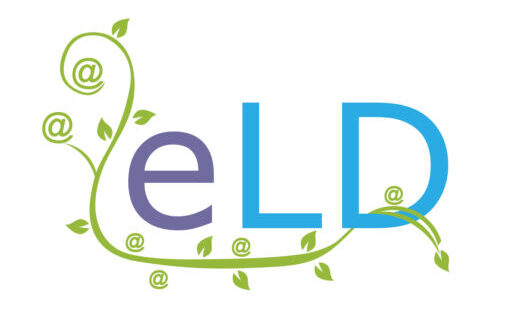Known variously as Enterprise Learning Management Systems, Corporate LMS, Business Learning Management Systems or simply ‘workplace LMS‘, if you’re new to e-learning in the workplace, one of the hurdles in deciding on the suitability of a platform is terminology. But once you know what you’re looking for, making a choice can be as simple as answering three questions: what are you teaching, to who, and how often?
Using Moodle in the workplace
With terminology in mind, Moodle comes in three flavours: core Moodle (out-of-the-box with no optional plugins), standard Moodle (out-of-the-box + optional plugins), and multi-tenancy Moodle (out-of-the-box + optional plugins + built-in multi-tenancy functions).
Are you moving your in-person training online, or do you already offer e-learning to staff that you’d now like to sell externally? Do you want to white-label branding for multiple clients, or do you need to devolve administration for a complex corporate hierarchy? Or do you just want to simplify the process for your in-house training by automating record-keeping and recertification? To help you figure out which Moodle you need in your workplace, here are the questions to ask:
1. What are you teaching?
If you’re delivering courses to a single organisation or one-off courses to multiple organisations, then standard Moodle will suit. But because there’s no long-term storage capability in this flavour of Moodle, archives and records will need to be held separately.
2. Who are you teaching?
If you’re delivering CPD or compliance-based training to multiple organisations (or any organisation with complicated reporting structures), IOMAD automates records archiving and white-labels the user experience, from log-on to log-off.
3. How often are you teaching them?
If you’re delivering in-house training with regular re-certification requirements, then an IOMAD Office configuration does the hard work of remembering (and reminding) all the appropriate users that it’s that time of year again, then storing the results.
Pros of multi-tenancy Moodle
One of the best things about Moodle is that it’s open source, so you can download and use it for free. If you want your workplace Moodle to be equally budget-friendly, then open-source IOMAD is what you need…
Exceptional scalability for every workplace: From one tenant to hundreds, a handful of learners to thousands, an IOMAD installation leverages a Moodleplex of functionalities to deliver your courses at every enterprise level.
Follows Moodle for versions, bug fixes and security patches: As IOMAD is Moodle under the hood, you can still use all of Moodle’s supported features and plugins, upgrading your installation in line with new Moodle version releases.
Per-tenant branding and customisation capabilities: IOMAD can fully individualise a tenant experience, including per-tenant URLs, SMTP, themes, logos, MFA configuration, authentication, company hierarchies, site policies, and more.
Licensed-based model for purchase and allocation: IOMAD’s unique licensing feature is a highly customisable way to sell training to your clients, control resources within your organisation, and customise course and program allocation.
Automated course completion archiving: IOMAD holds enrolment and completion information in a dedicated data archive. This provides a historical course record for all users, allowing them to be cleared out of completed courses, ready for re-certification.
License-based enrolment management: IOMAD allows you to organise and automate your courses to your exact specifications, including certification and re-certification lifecycle management, periodic activity release, and more.
Per-tenant roles and capabilities: As well as defining site-wide capabilities, you can fine-tune roles on a per-tenant basis with IOMAD. This means all administration requirements can be precisely and autonomously set.
Devolved reporting functionality: Because IOMAD recognises per-tenant hierarchies, reporting functionalities do, too. Get overview and per-manager reports for compliance, license allocation, training events, course completion, user logins, and more.
Shares courses and resources on a per-tenant basis: IOMAD allows you to assign courses to a single tenant, share courses across selected tenants, or share all courses across all tenants, each with its own branding and user autonomy.
In-built certificate white-labelling options: Based on the Moodle Certificate module, IOMAD certificate types tie into the reporting feature for listings and download access, and can be white-labelled within shared courses for per-tenant branding.
Internal and external ecommerce functionality: With pluggable payment methods, per-tenant payment options, and the WooIOMAD plugin for WooCommerce integration, IOMAD offers a truly customisable ecommerce experience.
Cons of multi-tenancy Moodle
Might be more than you need: Particularly if you’re only providing a small number of one-off courses to a handful of learners, the bells and whistles offered by IOMAD/IOMAD Office could make your workplace LMS more complicated than necessary.
Can be challenging to integrate with new systems: If there’s no third-party plugin already available, integration is rarely a simple plug-and-play. Development can make it work, but that inevitably comes with additional costs.
A level of technical familiarity is required: As is true for even the most user-friendly software, you’ll need time to get up to speed. Depending on your in-house expertise, you may have to pay for extra technical support to get things working to spec.
Workplace Moodle FAQs
Sometimes, but it depends on the platform you choose. Open source software (i.e. Moodle and IOMAD) is free to use, so you just pay for the supplementary services (hosting level, support time, etc), while SaaS models charge on a per-user basis, which can obviously rack up the costs as your learner base grows.
The choice shouldn’t be based on the size of your organisation, but on what you need your LMS to do. If you can separately keep records of who did what when, and when they need to do it again, then standard Moodle will be fine. If you’d like to automate those bits of your workplace compliance training, then IOMAD Office is a better option.
Absolutely. As IOMAD is Moodle under the hood, you’re essentially adding a specific suite of plugins to increase the functionality of your site. And if you change your mind later, it’s easy to remove them. The only thing to remember is that it’s always a ‘bundled’ action – the plugins aren’t available individually, so IOMAD is installed as a full code package.


